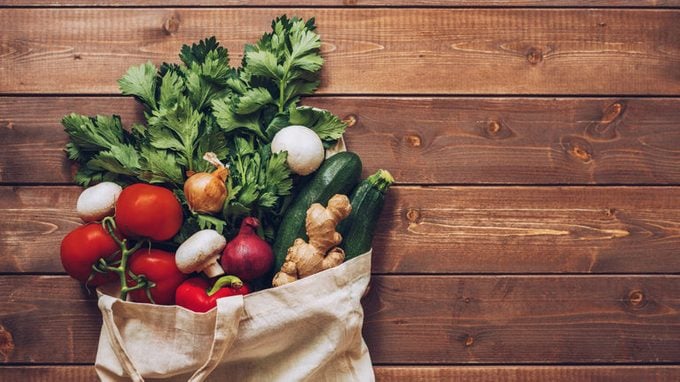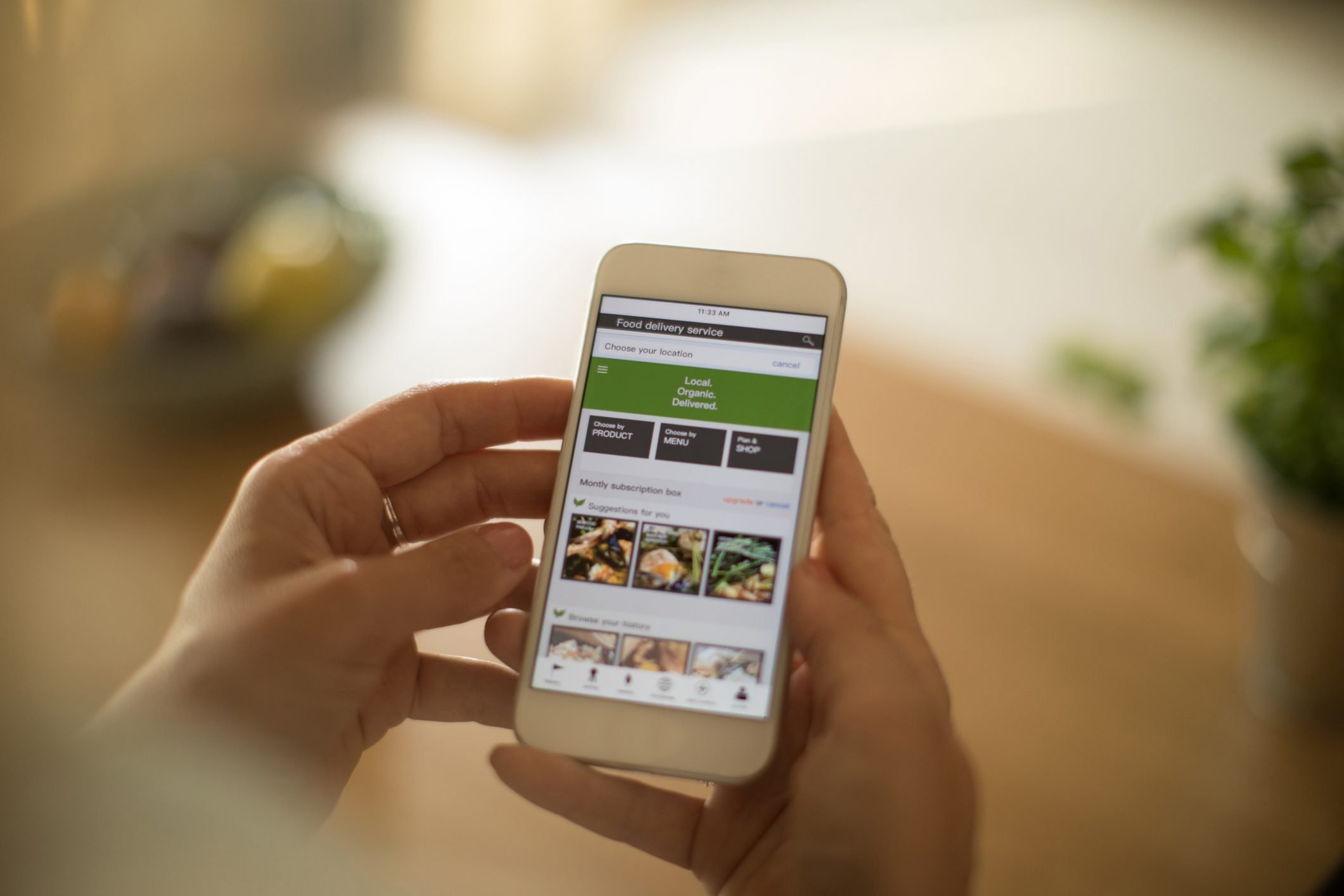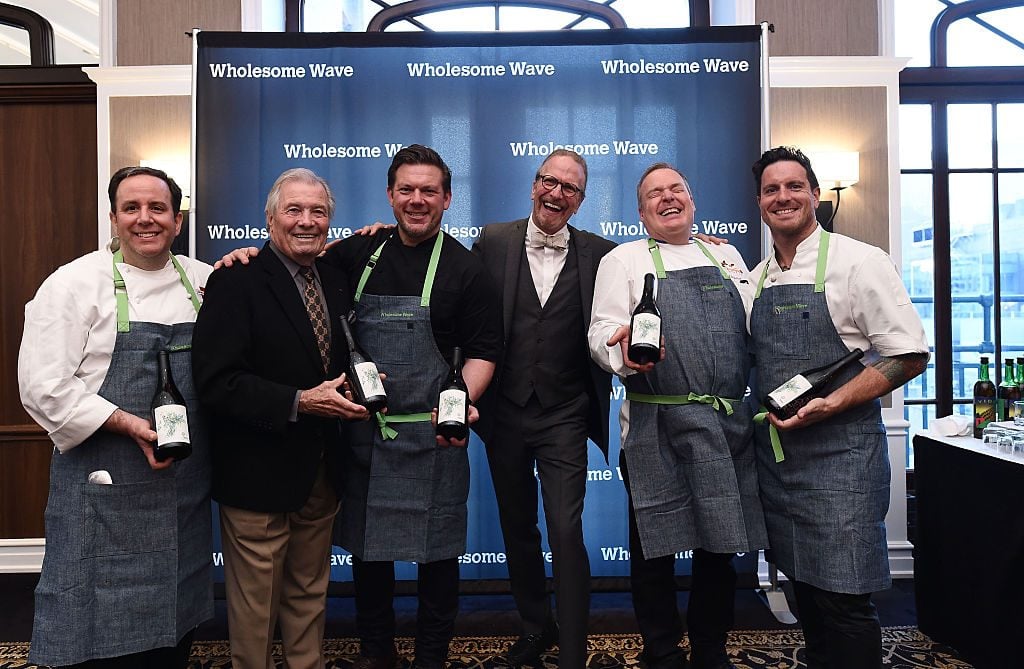Get a Prescription for Free Produce Through This Non-Profit
Updated: Mar. 16, 2022
Wholesome Wave enables doctors to prescribe fresh—and free—fruits and vegetables to low-income patients.
 Imagine a produce delivery from a doctor sent right to your doorstep. Now, families who participate in the Fruit and Vegetable Prescription Program (FVRx) through the nonprofit Wholesome Wave, will soon be able to order fresh food using an app.
Imagine a produce delivery from a doctor sent right to your doorstep. Now, families who participate in the Fruit and Vegetable Prescription Program (FVRx) through the nonprofit Wholesome Wave, will soon be able to order fresh food using an app.
The Wholesome Rx program partners with doctors and nutritionists who write prescriptions equal to $1 per day of produce to low-income patients with health indicators—such as weight, high blood pressure, or diabetes—that put them at risk for chronic diseases and to some managing existing conditions.
For each person who gets the prescription, the program adds an additional $1 per day for each member of the household so that the entire family can have access to healthy food. For example, a family of four gets $28 a week to spend on fruits and vegetables.
Wholesome Wave’s mission is to make fruits and vegetables a part of everyday life for people regardless of their financial circumstances. “If consuming more fruits and vegetables can help prevent type 2 diabetes, heart disease, and stroke, and can help somebody more effectively recover from chemotherapy because it replenishes the body of micronutrients and phytochemicals, then income shouldn’t prevent you from being able to access those things,” says Wholesome Wave co-founder Michel Nischan, a four-time James Beard Award-winning chef.
Moving to digital orders
The FVRx program, which launched in 2010, began as a partnership with farmers markets and often used a token system, and then expanded to some grocers using coded coupons. By 2012, Wholesome Wave had about 20 FVRx programs in 12 states and a similar number today that fluctuate based on local funding. As the program added more retailers and organizers attempted to improve access, the challenge became figuring out a way to give families more choice of where to shop based on their schedules, Nischan says.
The organization started looking into an app after hitting roadblocks when trying to create a card that families could use at any partnering grocery store or market. The app solves that issue and also allows participants to take surveys directly in the app about their experience with the program, which saves Wholesome Wave the time and resources to try to track down participants for feedback, Nischan says.
“The downside is that not everyone struggling with food insecurity has a mobile device, but we’d rather reach a few million people easily and have produce delivered to them than reach a few hundred thousand with four forms of currency.” Although not everyone can access an app, a 2019 report from the Pew Research Center found that 71 percent of Americans who earn less than $30,000 year—a group that’s likely to be food insecure—own smartphones.

Wider availability coming
The app Wholesome Wave is using is called Tangerine, and a year-and-a-half-long pilot program with several hundred testers in Hartford, Connecticut; Corpus Christi, Texas; Brooklyn, New York; and Navajo Nation territory, was recently completed. Nischan says the app is now ready for launch on a wider scale and will start entering additional markets, including a region in upstate New York with a participating network of seven CSAs that deliver produce, in the coming months. When a person gets FVRx, they can download the app and access their prescription through their phone number. Money gets loaded to the app as a restricted wallet so that it can be used only to purchase fruits and vegetables, Nischan says.
The app has a pantry section where the user selects which retailer to use for food delivery or pickup. It may include local farmers’ markets, CSAs, local grocers, Walmart, or Amazon Fresh. The app will also eventually include meal plans and recipes from a network of chefs organized by Nischan. People can also check their eligibility or ask for more information about the program via the app.
Loving the healthy options
Participating physicians report that kids in the FVRx program tell them about a new love of green apples and cucumbers, while their parents and grandparents rave about new recipes with fresh food instead of the canned versions they’d long relied upon for budgetary reasons.
“People aren’t eating Easy Mac and doing so many recipes with Minute rice and cream of mushroom soup because they don’t care what they’re eating or because they don’t know any better. They are eating that stuff because it’s the only thing they can afford to eat,” Nischan says.
Each prescription enrolls patients and their households for four or five months at a time with the option to renew after the patient is reassessed.
The cost of eating better
Nischan has two sons with type 1 diabetes: After his son Chris was diagnosed in 1994, the whole family made a lifestyle change that led to what Nischan calls “a 180 in the way I cooked in my career.”
“I realized I was feeding my restaurant customers things I wouldn’t feed my family, I changed the way I cooked in my restaurant and completely changed the business model,” he says. He had a restaurant called Heartbeat that omitted cream, butter, flour, and added sugar. He used all local, organic, sustainable ingredients, and nothing processed. “I could do that because my customers could afford $30 entrees,” he says.
In 2002, Nischan attended a Worlds of Healthy Flavors conference to do some healthy cooking demos. He learned that it was common for a family of four to run out of SNAP (Supplemental Nutrition Assistance Program), or food stamps, benefits mid-month and then have only about $2 to spend on a meal. “I’d been patting myself on the back for work I was doing at Heartbeat, but then when I learned that there were tens of millions of Americans who couldn’t even afford one head of broccoli as a side, I was looking out over all the white tablecloths and not feeling great about myself.”

The birth of Wholesome Wave
As he searched for ways to address food insecurity and improve food equity, Nischan met the late Gus Schumacher, a farmer and former U.S. Undersecretary of Agriculture, and the pair started collaborating. Nischan and Schumacher cofounded Wholesome Wave in 2007 with financial backing from the Newman’s Own Foundation and the Betsy and Jesse Fink Foundation. Wholesome Wave’s initial goal was to double SNAP benefits for fruits and vegetables, which eventually became the Food Insecurity Nutrition Incentive (FINI) in the 2014 Farm Bill and then was renamed the Gus Schumacher Nutrition Incentive Program (GusNIP) in the 2018 Farm Bill.
After founding Wholesome Wave, Nischan learned about a produce prescription program in Michigan that was distributing $5 coupons at community health centers that could be exchanged at a local farmer’s market. The Wholesome Wave team wanted to take it a step further and partner with physicians to target people at risk for diet-related diseases. They piloted the FVRx program in 2010 in Massachusetts by partnering with a former health-focused nonprofit called Ceiling and Visibility Unlimited (CAVU) that was already partnering with doctors to prescribe exercise and helping patients get access to low-cost exercise equipment.
Expanding access to produce prescriptions
Wholesome Wave began with farmer’s markets since it had a lot of those partnerships already set up and then slowly expanded to local grocers and other retailers. There are also several organizations, such as DC Greens, that got initial seed money from Wholesome Wave and now operate independently with similar prescription programs. Thirty states now have some form of a produce prescription program, and Wholesome Wave works in 49 states in some form. Nischan says Wholesome Wave also plans to advocate for legislation to try to bring prescription programs to all 50 states. “We continue to grow it and we are going to eventually advocate for policy change,” Nischan says. “You can wait until someone gets sick and then it’s all about prescribing drugs or you can get food into their system to try to prevent them from getting sick in the first place,” Nischan says.
